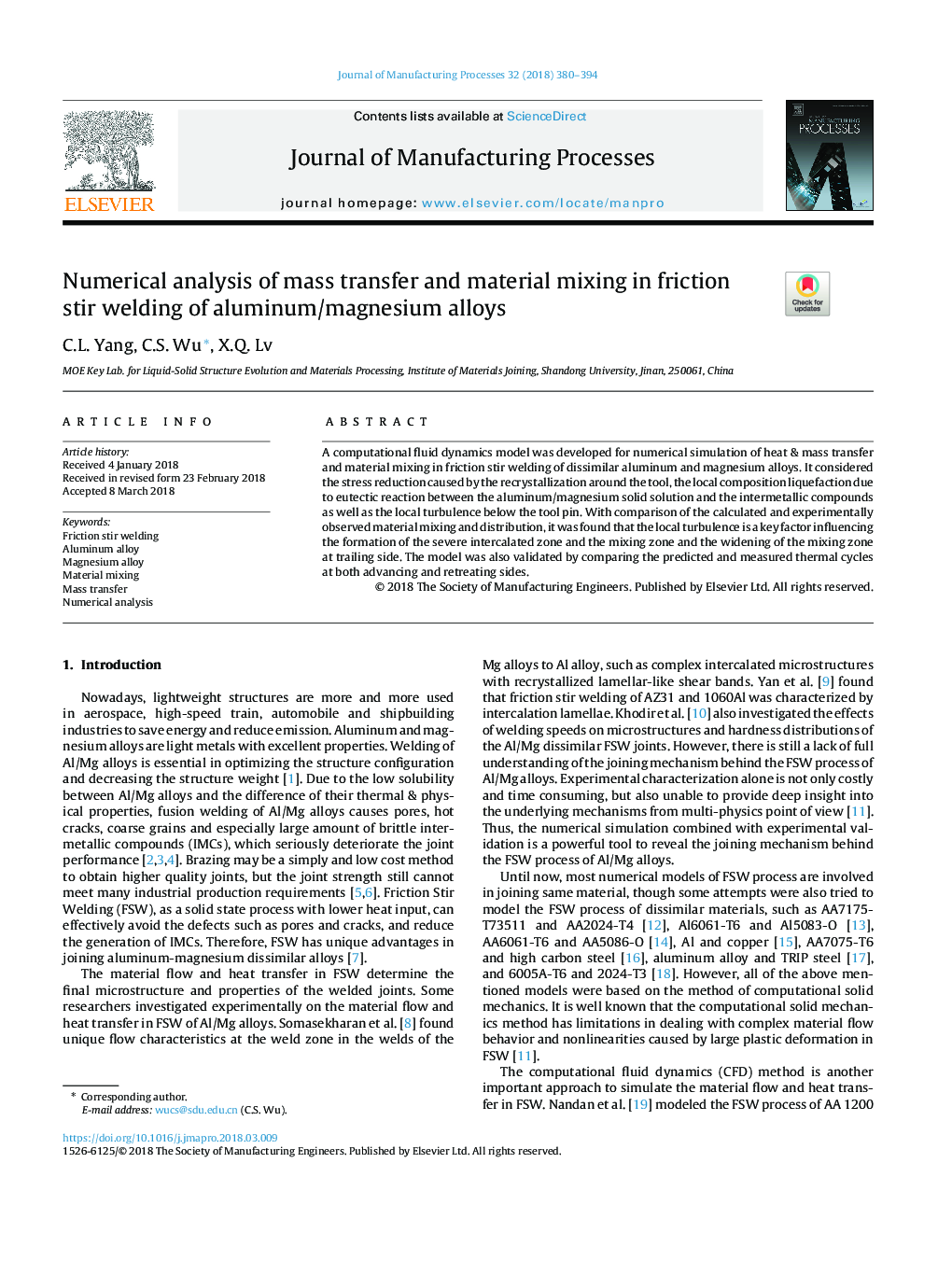| Article ID | Journal | Published Year | Pages | File Type |
|---|---|---|---|---|
| 8047997 | Journal of Manufacturing Processes | 2018 | 15 Pages |
Abstract
A computational fluid dynamics model was developed for numerical simulation of heat & mass transfer and material mixing in friction stir welding of dissimilar aluminum and magnesium alloys. It considered the stress reduction caused by the recrystallization around the tool, the local composition liquefaction due to eutectic reaction between the aluminum/magnesium solid solution and the intermetallic compounds as well as the local turbulence below the tool pin. With comparison of the calculated and experimentally observed material mixing and distribution, it was found that the local turbulence is a key factor influencing the formation of the severe intercalated zone and the mixing zone and the widening of the mixing zone at trailing side. The model was also validated by comparing the predicted and measured thermal cycles at both advancing and retreating sides.
Keywords
Related Topics
Physical Sciences and Engineering
Engineering
Industrial and Manufacturing Engineering
Authors
C.L. Yang, C.S. Wu, X.Q. Lv,
